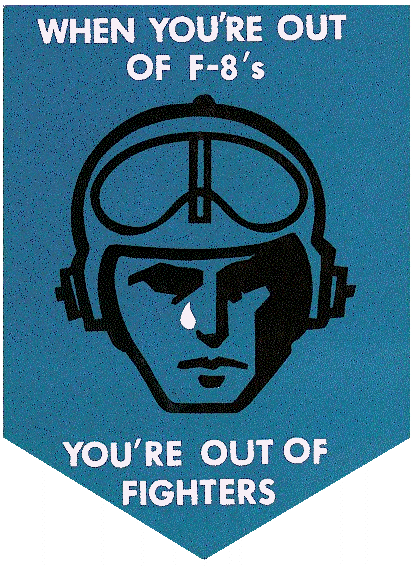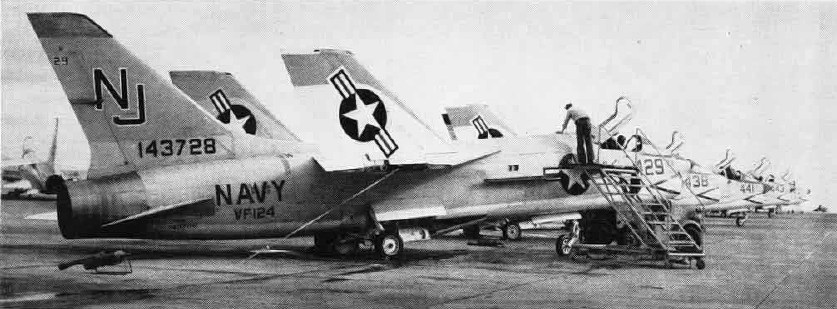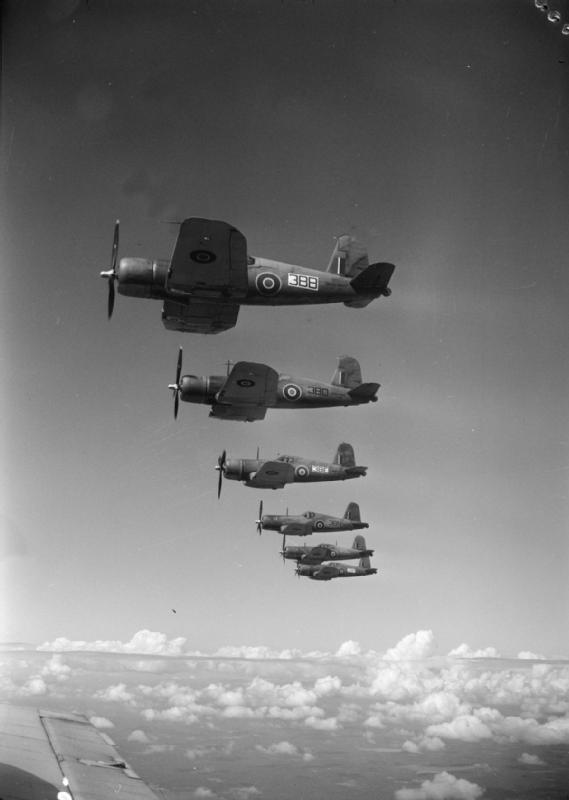|
VF-202
Fighter Squadron 202 (VF-202) nicknamed the ''Superheats'' was an aviation unit of the United States Naval Reserve initially based at Naval Air Station Dallas, Texas. Following that installation's BRAC-directed closure, the squadron relocated to nearby former Carswell Air Force Base, which was transferred to U.S. Navy control according to BRAC action and renamed Naval Air Station Joint Reserve Base Fort Worth / Carswell Field. VF-202 was established on 1 July 1970 as part of Reserve Carrier Air Wing 20 (CVWR-20), the U.S. Atlantic Fleet's reserve carrier air wing, and disestablished on 31 December 1994. During its service VF-202 could be identified by the tail code "AF" and nose numbers (MODEX) "200" through "213." History VF-202 was established on 1 July 1970 out of Naval Reserve fighter squadron VF-53D2, this as part of a total revamping of the Naval Air Reserve following problems with the callup of Naval Reserve tactical aviation squadrons during the Pueblo crisis of 1968. ... [...More Info...] [...Related Items...] OR: [Wikipedia] [Google] [Baidu] |
F-8 Crusader
The Vought F-8 Crusader (originally F8U) is a single-engine, supersonic, carrier-based air superiority jet aircraft built by Vought for the United States Navy and United States Marine Corps (replacing the Vought F7U Cutlass), and for the French Navy. The first F-8 prototype was ready for flight in February 1955. The F-8 served principally in the Vietnam War. The Crusader was the last American fighter with guns as the primary weapon, earning it the title "The Last of the Gunfighters".Tillman 1990 The RF-8 Crusader was a photo-reconnaissance development and operated longer in U.S. service than any of the fighter versions. RF-8s played a crucial role in the Cuban Missile Crisis, providing essential low-level photographs impossible to acquire by other means. United States Navy Reserve units continued to operate the RF-8 until 1987. Design and development In September 1952, the United States Navy announced a requirement for a new fighter. It was to have a top speed of Mach ... [...More Info...] [...Related Items...] OR: [Wikipedia] [Google] [Baidu] |
Vought F-8 Crusader
The Vought F-8 Crusader (originally F8U) is a single-engine, supersonic, carrier-based air superiority jet aircraft built by Vought for the United States Navy and United States Marine Corps (replacing the Vought F7U Cutlass), and for the French Navy. The first F-8 prototype was ready for flight in February 1955. The F-8 served principally in the Vietnam War. The Crusader was the last American fighter with guns as the primary weapon, earning it the title "The Last of the Gunfighters".Tillman 1990 The RF-8 Crusader was a photo-reconnaissance development and operated longer in U.S. service than any of the fighter versions. RF-8s played a crucial role in the Cuban Missile Crisis, providing essential low-level photographs impossible to acquire by other means. United States Navy Reserve units continued to operate the RF-8 until 1987. Design and development In September 1952, the United States Navy announced a requirement for a new fighter. It was to have a top speed of Mach 1.2 ... [...More Info...] [...Related Items...] OR: [Wikipedia] [Google] [Baidu] |
McDonnell Douglas F-4 Phantom II
The McDonnell Douglas F-4 Phantom II is an American tandem two-seat, twin-engine, all-weather, long-range supersonic jet interceptor and fighter-bomber originally developed by McDonnell Aircraft for the United States Navy.Swanborough and Bowers 1976, p. 301. Proving highly adaptable, it entered service with the Navy in 1961 before it was adopted by the United States Marine Corps and the United States Air Force, and by the mid-1960s it had become a major part of their air arms. Phantom production ran from 1958 to 1981 with a total of 5,195 aircraft built, making it the most produced American supersonic military aircraft in history, and cementing its position as an iconic combat aircraft of the Cold War."F-4 Phantoms Phabulous 40th" Boeing. Retrieved : 27 November 2012. [...More Info...] [...Related Items...] OR: [Wikipedia] [Google] [Baidu] |
F-4 Phantom II USN Last Operational Carrier Landing
The McDonnell Douglas F-4 Phantom II is an American tandem two-seat, twin-engine, all-weather, long-range supersonic jet interceptor and fighter-bomber originally developed by McDonnell Aircraft for the United States Navy.Swanborough and Bowers 1976, p. 301. Proving highly adaptable, it entered service with the Navy in 1961 before it was adopted by the United States Marine Corps and the United States Air Force, and by the mid-1960s it had become a major part of their air arms. Phantom production ran from 1958 to 1981 with a total of 5,195 aircraft built, making it the most produced American supersonic military aircraft in history, and cementing its position as an iconic combat aircraft of the Cold War."F-4 Phantoms Phabulous 40th" Boeing. Retrieved : 27 November 2012. [...More Info...] [...Related Items...] OR: [Wikipedia] [Google] [Baidu] |
VFA-201
The VFA-201, Strike Fighter Squadron was an aviation unit of the United States Naval Reserve based at Naval Air Station Joint Reserve Base Fort Worth, Texas (USA). It was established in 1970 as part of Reserve Carrier Air Wing 20 (CVWR-20) and deactivated in 2007. During its service VFA-201 could be identified by the tail code "AF" and nose numbers (MODEX) in the "100" series, typically 100 to 113. The squadron's nickname was the ''Hunters.'' History The United States Naval Reserve fighter squadron VF-201 was established at NAS Dallas on 25 July 1970, succeeding VF-124D1. It first flew the Vought F-8H Crusader, and in 1976 it transitioned to the McDonnell Douglas F-4N Phantom II. In 1984, the squadron transitioned to the F-4S Phantom II, the most advanced Phantom to enter service with the United States Navy. Soon the U.S. Navy moved to the policy that reserve units would have the same equipment as front line units, VF-201 transitioned to the Grumman F-14A Tomcat in early 19 ... [...More Info...] [...Related Items...] OR: [Wikipedia] [Google] [Baidu] |
Grumman F-14 Tomcat
The Grumman F-14 Tomcat is an American carrier-capable supersonic aircraft, supersonic, twinjet, twin-engine, two-seat, twin-tail, variable-sweep wing fighter aircraft. The Tomcat was developed for the United States Navy's Naval Fighter Experimental (VFX) program after the collapse of the General Dynamics–Grumman F-111B, General Dynamics-Grumman F-111B project. The F-14 was the first of the American Teen Series fighters, which were designed incorporating aerial warfare, air combat experience against Mikoyan, MiG fighters during the Vietnam War. The F-14 first flew on 21 December 1970 and made its first deployment in 1974 with the U.S. Navy aboard , replacing the McDonnell Douglas F-4 Phantom II. The F-14 served as the U.S. Navy's primary maritime air superiority fighter, fleet defense interceptor aircraft, interceptor, and tactical aerial reconnaissance platform into the 2000s. The Low Altitude Navigation and Targeting Infrared for Night (LANTIRN) pod system was added in the ... [...More Info...] [...Related Items...] OR: [Wikipedia] [Google] [Baidu] |
VF-124
Fighter Squadron 124 or VF-124 ''Gunfighters'' was a fleet replacement squadron (FRS) of the United States Navy. Originally established on 16 August 1948 as VF-53, it was redesignated VF-124 at NAS Moffett Field on 11 April 1958 due to a need for an increased number of flight training squadrons, itself necessary because of introduction of swept wing fighters into Navy service. In 1961, the squadron relocated to NAS Miramar, California, which would become the U.S. Pacific Fleet's Master Jet Base for fighter aircraft. The squadron's task as an FRS was the training of pilots for the F-8 Crusader, and later the training of pilots and radar intercept officers for the F-14 Tomcat. The squadron was disestablished on 30 September 1994 and its F-14 FRS mission consolidated with its U.S. Atlantic Fleet counterpart, VF-101, at NAS Oceana, Virginia. History Korean War VF-53 equipped with F4U-4B Corsairs was assigned to Carrier Air Group 5 aboard from 1 May to 1 December 1950 and was one ... [...More Info...] [...Related Items...] OR: [Wikipedia] [Google] [Baidu] |
A-5 Vigilante
The North American A-5 Vigilante was an American carrier-based supersonic bomber designed and built by North American Aviation (NAA) for the United States Navy. Prior to 1962 unification of Navy and Air Force designations, it was designated the A3J Vigilante.Wagner 1982, p. 361. Development of the A-5 had started in 1954 as a private venture by NAA, who sought to produce a capable supersonic long distance bomber as a successor to the abortive North American XA2J Super Savage. It was a large and complex aircraft that incorporated several innovative features, such as being the first bomber to feature a digital computer, while its ability to attain speeds of up to Mach 2 while carrying a nuclear strike payload was also relatively ambitious for the era. The US Navy saw the value of such a bomber, leading to a contract for its full development and production being issued to the firm on 29 August 1956. The type performed its first flight just over two years later, on 31 August 1958 ... [...More Info...] [...Related Items...] OR: [Wikipedia] [Google] [Baidu] |
Vought F-8H 147901 VF-202 Dallas NAS 19
Vought was the name of several related American aerospace firms. These have included, in the past, Lewis and Vought Corporation, Chance Vought, Vought-Sikorsky, LTV Aerospace (part of Ling-Temco-Vought), Vought Aircraft Companies, and Vought Aircraft Industries. The first incarnation of Vought was established by Chance M. Vought and Birdseye Lewis in 1917. In 1928, it was acquired by United Aircraft and Transport Corporation, which a few years later became United Aircraft Corporation; this was the first of many reorganizations and buyouts. During the 1920s and 1930s, Vought Aircraft and Chance Vought specialized in carrier-based aircraft for the United States Navy, by far its biggest customer. Chance Vought produced thousands of planes during World War II, including the F4U Corsair. Vought became independent again in 1954, and was purchased by Ling-Temco-Vought (LTV) in 1961. The company designed and produced a variety of planes and missiles throughout the Cold War. Vought was ... [...More Info...] [...Related Items...] OR: [Wikipedia] [Google] [Baidu] |
Nuclear Bombs
A nuclear weapon is an explosive device that derives its destructive force from nuclear reactions, either fission (fission bomb) or a combination of fission and fusion reactions (thermonuclear bomb), producing a nuclear explosion. Both bomb types release large quantities of energy from relatively small amounts of matter. The first test of a fission ("atomic") bomb released an amount of energy approximately equal to . The first thermonuclear ("hydrogen") bomb test released energy approximately equal to . Nuclear bombs have had yields between 10 tons TNT (the W54) and 50 megatons for the Tsar Bomba (see TNT equivalent). A thermonuclear weapon weighing as little as can release energy equal to more than . A nuclear device no larger than a conventional bomb can devastate an entire city by blast, fire, and radiation. Since they are weapons of mass destruction, the proliferation of nuclear weapons is a focus of international relations policy. Nuclear weapons have been deploye ... [...More Info...] [...Related Items...] OR: [Wikipedia] [Google] [Baidu] |
United States
The United States of America (U.S.A. or USA), commonly known as the United States (U.S. or US) or America, is a country primarily located in North America. It consists of 50 U.S. state, states, a Washington, D.C., federal district, five major unincorporated territories, nine United States Minor Outlying Islands, Minor Outlying Islands, and 326 Indian reservations. The United States is also in Compact of Free Association, free association with three Oceania, Pacific Island Sovereign state, sovereign states: the Federated States of Micronesia, the Marshall Islands, and the Palau, Republic of Palau. It is the world's List of countries and dependencies by area, third-largest country by both land and total area. It shares land borders Canada–United States border, with Canada to its north and Mexico–United States border, with Mexico to its south and has maritime borders with the Bahamas, Cuba, Russia, and other nations. With a population of over 333 million, it is the List of ... [...More Info...] [...Related Items...] OR: [Wikipedia] [Google] [Baidu] |







%2C_in_July_1960.jpg)

